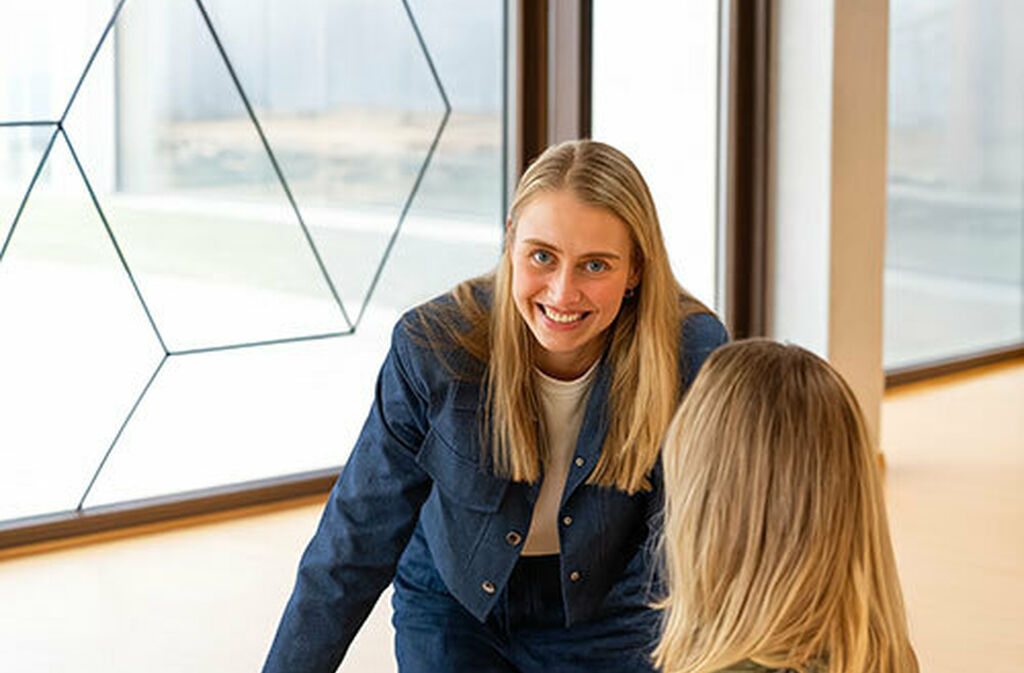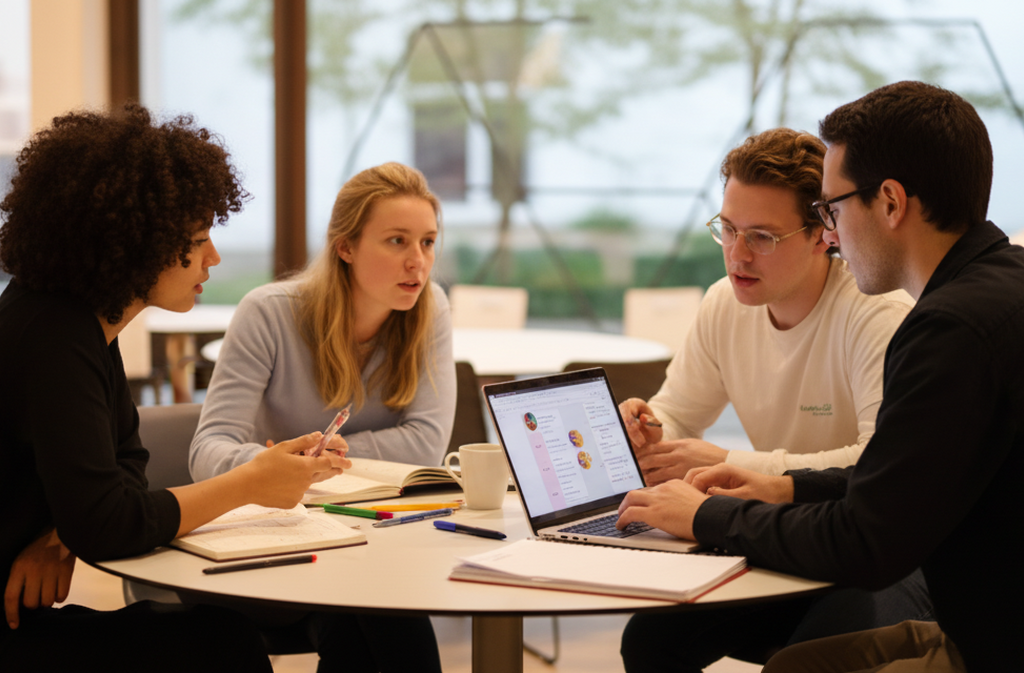Digital transformation is a hot topic - and a broad term at that. That may sound technical, and in many ways it is. Yet Marco Huygen demonstrates that it’s possible to successfully bridge the gap between technology and the human aspect. When he recently became CIDO, Chief Information & Digital Officer, at IDEWE, Belgium's largest external partner for prevention and safety at work, the program at Antwerp Management School gave him the necessary tools for this new role. A conversation about digitalization, strategic thinking, personal commitment and a mission for more well-being at work.
AMS: You had been with IDEWE for twelve years, nine as Team Lead/Architect in the IT department. So there was certainly no lack of experience. Yet you saw the added value of additional management education to take the step towards your new role as Chief Information & Digital Officer (CIDO)?
Marco: It’s true that I already had a solid background in IT. I’d spent ten years working as a consultant, including for IDEWE, before joining the company permanently in 2010. In 2019, I became Business Project & Development Manager. Still, both I and the organization felt there were more opportunities within the team. Developing and sharing a clear vision, taking initiative… I realized I was often relying on gut feeling. There’s also the challenge that in many organizations, IT and business speak different languages, when in fact they should be reinforcing each other. As a CIDO, it’s not enough to be strong in IT; you also need to be skilled in strategic thinking and collaboration to find solutions that benefit the entire organization. To get off to a good start in my new role, both the company and I felt it was the right move to enroll in a program at Antwerp Management School.
Which program was that exactly?
I initially chose the Major Enterprise IT Architecture module because I have always had a strong interest in IT and architecture. However, I ended up completing the full Executive Master’s program in Digital Leadership & Transformation, which provided me with much broader knowledge and a solid foundation for my new management role.
You mentioned that architecture in general interests you a lot. Isn’t that somewhat removed from the IT context in which you work?
An architect must go beyond the purely functional and technical. They talk to people, listen to their needs, and understand how they work and live. Then, they design solutions tailored to those needs.
As an information architect, you listen to people within the company, coordinate with the management team to understand objectives, and develop an architecture that is both effective and future-proof. The latter is especially important and should never be overlooked. To achieve this, you need to speak the language of both IT and business. That’s one of the many valuable insights I gained at AMS.
What stands out most for you in this master’s program? Is it the academic knowledge, the interaction with fellow students, or the hands-on case studies?
I’d say it’s a combination. During the AMS program, you gain many practical tools that you can apply in your own organization to achieve your goals. I think of them as useful frameworks I can rely on in every aspect of my role as a CIDO. They help guide me in different situations—sometimes confirming your gut feeling, sometimes challenging it. You also learn to think outside the box, exploring innovative business models and digital strategies that help you stay ahead of the competition and secure your company’s future.
“Impact isn’t created overnight, but the AMS master’s program was crucial.”
So, it requires vision. As a CIDO, how do you make decisions at IDEWE?
We always ask ourselves: how can IT bring value to the business? Why do we do what we do, and what impact does it have on people? This applies both to our employees, who need to work effectively with our technology, and to our customers, who use our tools to improve the quality of their prevention efforts. At IDEWE, our social commitment runs deep. With healthcare under increasing pressure, prevention really is the best medicine. Serving 35,000 employers and 870,000 employees, we have the opportunity to make a significant impact. And through IT, we can play a vital role in achieving that mission.
How have you put that into practice concretely at IDEWE?
Through AMS, we began working with COBIT, which is a framework that helps identify and address both technical and business challenges. This led us to recognize the need for an Architecture Board, which was quickly established in our organization. It’s essential to bring together different stakeholders across the company, listen to their perspectives, and at the same time demonstrate leadership. This process can sometimes create tension, but I always say: without tension, there is no electricity.
In your opinion, is leadership something that can be learnt?
Good question. If you have those qualities, I believe they will emerge sooner or later. But that’s not enough. You need to fine-tune your leadership and be challenged in a constructive way. During the AMS program, we were encouraged to think creatively and outside the box. Such a mindset is essential to remaining innovative and relevant as an organization.
During your master’s program, did you feel there was enough interaction with the professors and fellow students?
Definitely. AMS is a human-centered business school that truly understands the professional context. They tailor not only the programs but the entire approach to real-world needs. With many interactive sessions, the teaching staff engaged with us, encouraging us to push further. They are also very approachable, which creates an atmosphere that energizes and motivates. And motivation is really crucial, so your own drive is key.
How did you manage your schedule? In that area, too, you probably had to make choices and maybe even some sacrifices, right?
“Improving the well-being of 870,000 employees requires the right skills.”
If you decide to take an AMS program, you definitely need to commit the necessary time. That wasn’t always easy for me. At IDEWE, I had just joined the management team as CIDO, so there was a lot on my plate. It’s not just the classes but also the accompanying assignments—and that often meant working weekends. With a wife and two teenage sons at home, life was certainly busy. Fortunately, I could count on a great deal of understanding from both my family and employer. And if you truly commit, you get a lot in return. I was able to immediately harness the knowledge and insights gained at AMS as practical solutions for the company. At IDEWE, that means better supporting our employees and equipping our customers’ employees with the tools they need to improve their well-being through our products and services. It’s about creating impact—step by step and with careful planning. And that’s where IT can really make a difference.




